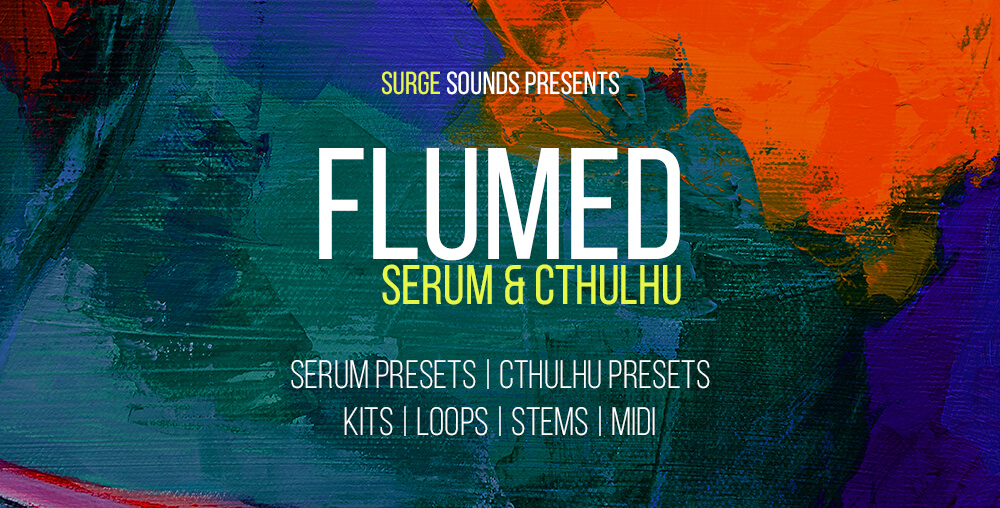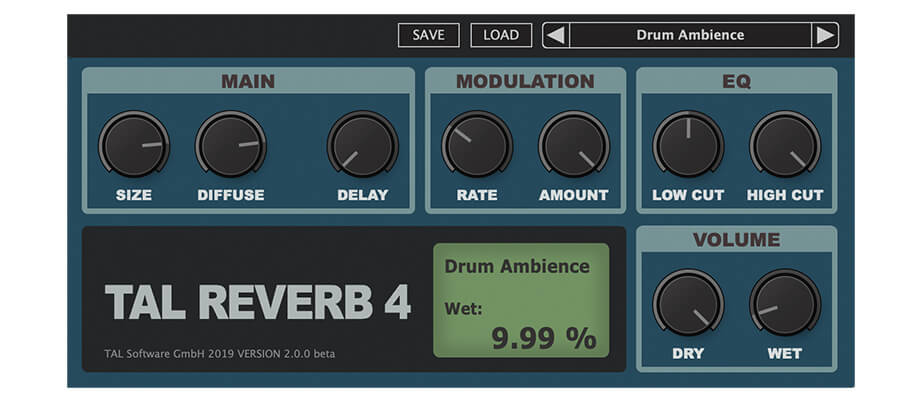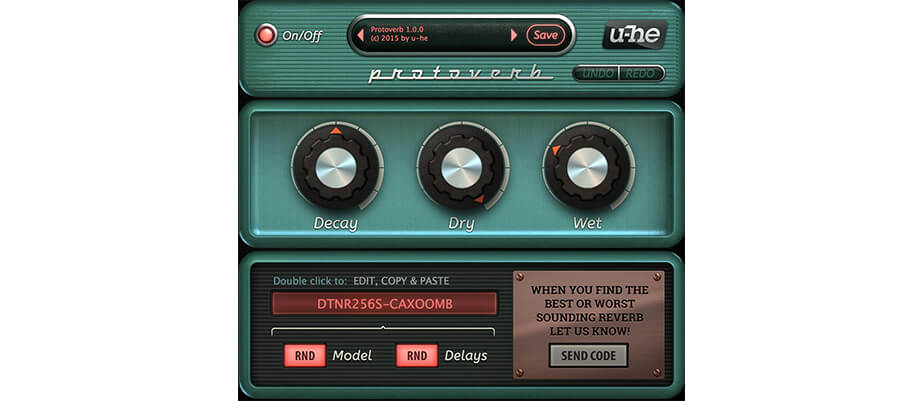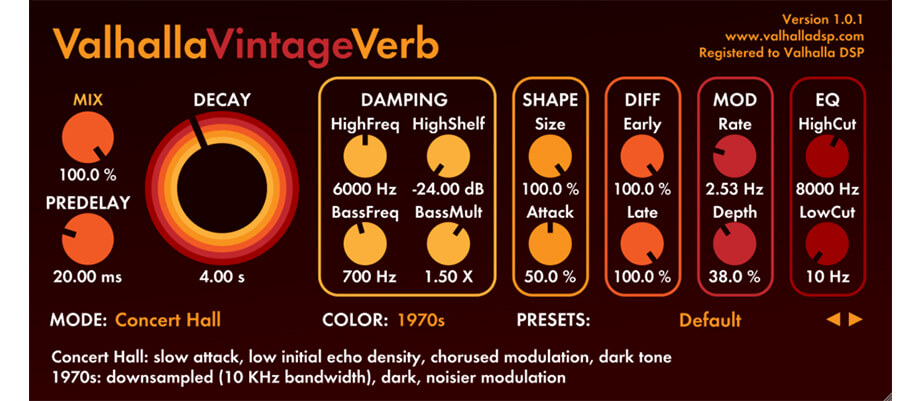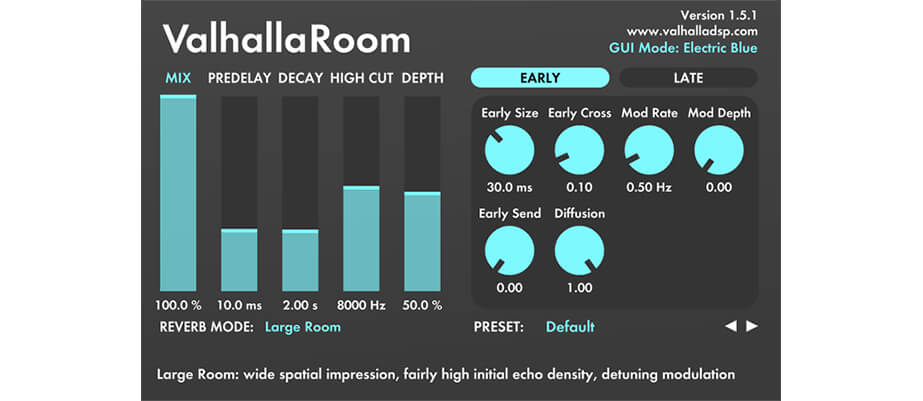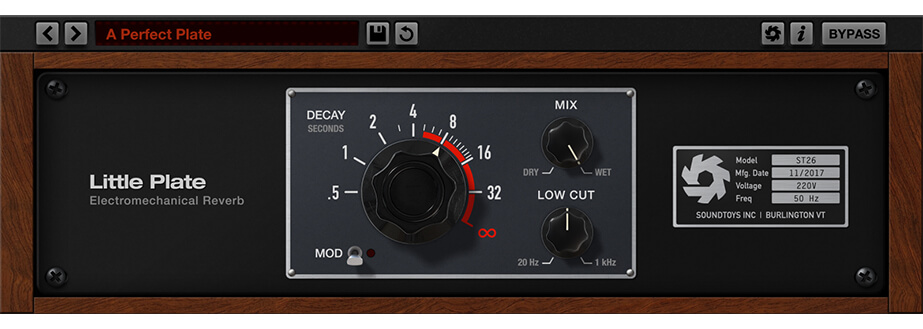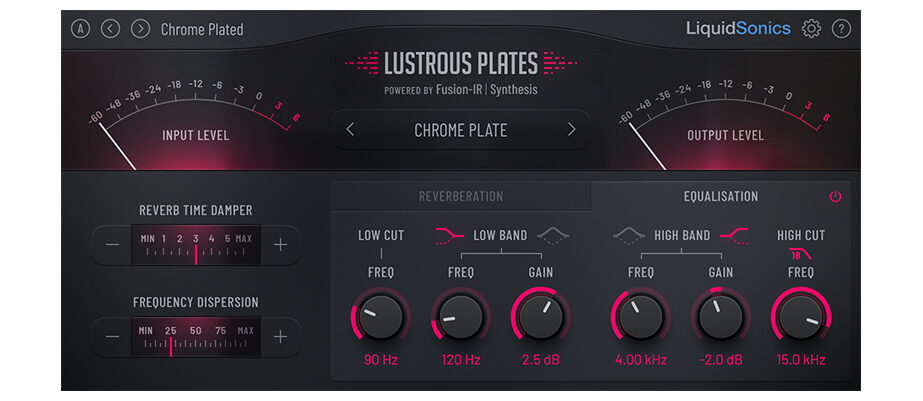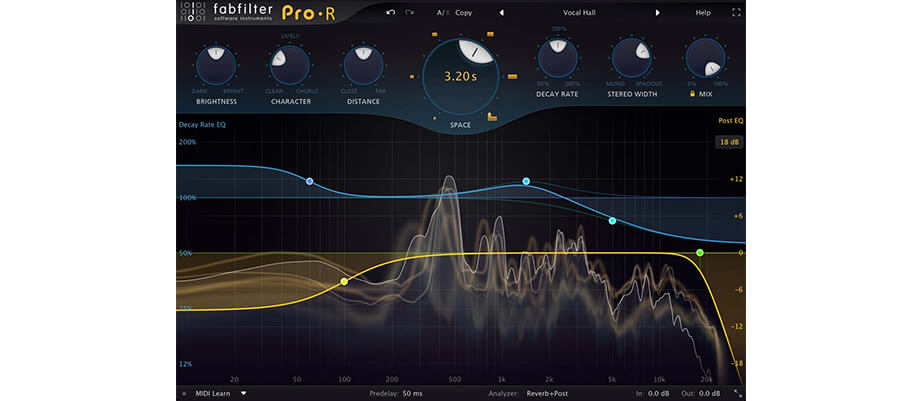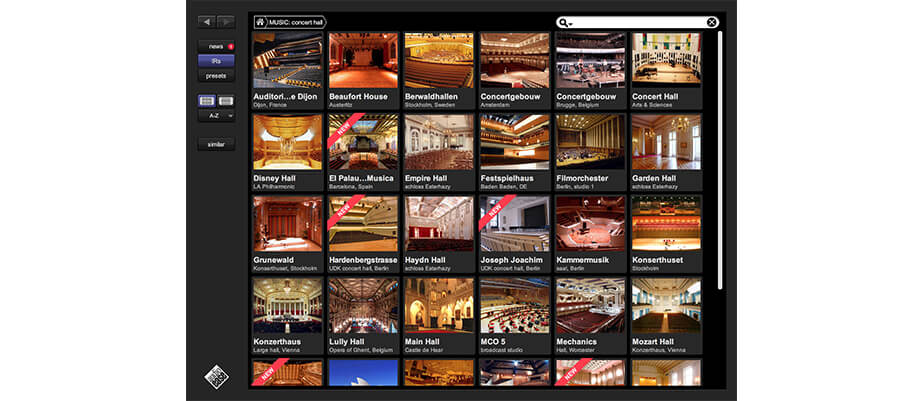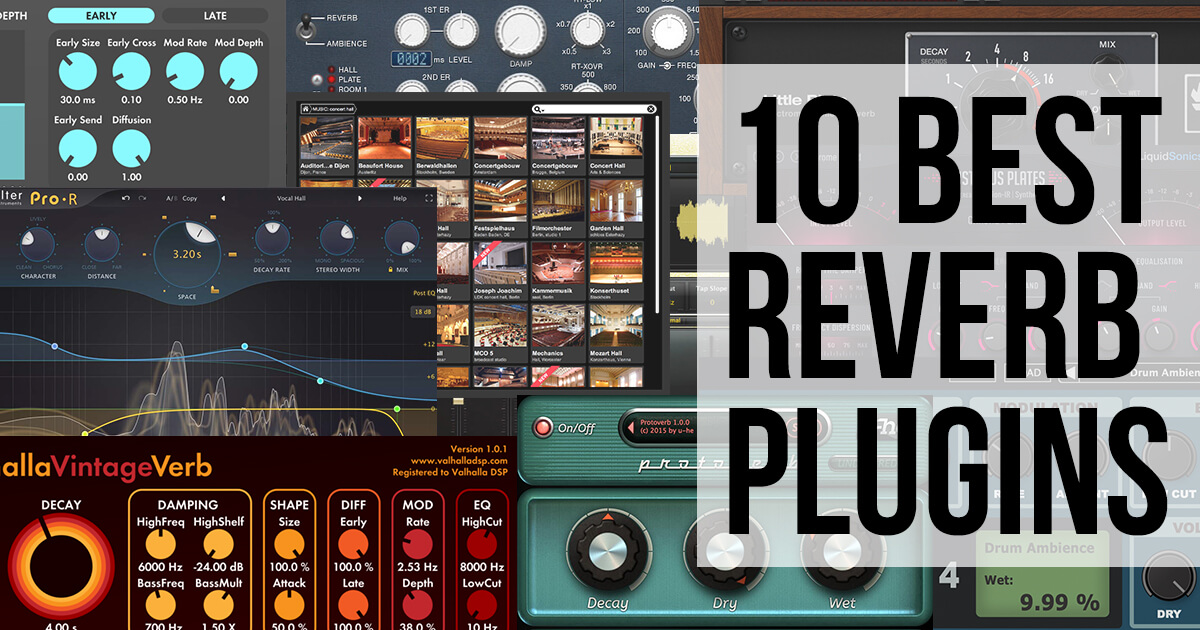
Best Reverb Plugins
Making the Space
The 10 Best Reverb Plugins, Premium and Free
When it comes to effects on recorded music, there’s no doubt that reverb is the very first to be captured. Initially, it wasn’t a deliberate thing. Primitive microphones and recording systems had no choice but to capture the room ambience. There were no high-fidelity pretensions in these early days, it was a mission to record and play back sounds at all. Sound production as a process was still years in the future.
However, reverb is there, all around us (or not) everywhere we go. It’s essentially what defines the sound of whichever space we’re in. Think about the reverb devices you use and how the settings are usually named: Hall, room, cathedral, cave, and so on. Reverb is all about space.
The Need for Artificial Reverb
Since it’s everywhere why, then, do reverb devices and plugins dominate digital signal processing? The answer is very relevant to the bedroom producer who is stuck in an extra room that has the acoustic characteristics of dumpster. Carnegie Hall it ain’t.
You’re probably already familiar with close miking or acoustic treatment to limit the sound of the typical drywall enclosed rectangular cuboid. When your signal is suitably devoid of the weird waves bouncing back at the mic, you then have a signal that is essentially devoid of reverb, which in this case is a good thing, since not all reverb is good reverb!
However, your signal now sounds… unnatural. Literally, it’s outside of nature, because we expect to hear the space in which that signal originated. As bedroom producers, we don’t want to advertise that we’re recording in the guest bedroom, so we dial up our favorite Carnegie Hall preset and add that to our now-dry original signal.
However…
Not all artificial reverb products are up to the task. Room acoustics and sound reflections are complex, in the understatement of the day. That’s just talking about reproducing realistic reverbs. There are plenty of noble failures too.
Consider the typical guitar amp spring reverb. Realistic? Nope. Desired? Yes, frequently. The same is true for some classic studio plate reverbs, or purpose-built reverb chambers, such as those in Capitol Records Hollywood studios, or NorVaJak Studio in Clovis New Mexico where Buddy Holly recorded. These aren’t “real” sources of reverb, but they’re valid sounds that capture certain vibes and compliment certain sound sources.
Analog and digital electronic reverbs also put their own spin on reality, to the point where the sound of the device become its own touchstone. If there’s a single reverb unit, physical or virtual, that claims it can do all things for all people, it’s lying. I’ll understate it again. Reverb is complex.
The 10 Best Reverb Plugins
Unless you know what you want, and it covers a limited sonic range, you’re going to need a few reverb plugins at the very least. As with all things plugin, there are freebies, modestly priced commercial offerings and state of the art premium extravaganzas. The reality of the world includes budgets, so forking over $700 for a single reverb isn’t exactly workable for every bedroom producer.
However, consider this: the famed reverb chamber at Gold Star Studios Santa Monica – home of the famed Wrecking Crew studio musicians, Phil Spector’s original Wall of Sound, and the Pet Sounds album by the Beach Boys – is a 2-foot by 3-foot concrete room with an inexpensive 8-inch speaker feeding a cheap ribbon microphone, brand unknown, according to Larry Levine, engineer for Phil Spector and the Pet Sounds sessions. Hardly auspicious, but nonetheless effective.
The takeaway? There’s room for all price points of reverbs if they’re doing what you need.
With that in mind, here’s a cross-section of 10 of the best reverb plugins you can buy or download for free. If you want to know what the top of the game sounds like at each price point, start with this list.
TAL Software Reverb 4
Free, VST/AU/AAX
Designed with the plate reverb sound in mind, TAL Reverb 4 was updated in early 2019 with a new interface on the outside and freshened algorithms behind the (virtual) knobs. This results in more control and versatility compared to earlier versions, which qualifies it for this list.
Great-sounding reverbs are typically resource hogs, because digitizing room reflections takes a lot of math. Yet, TAL Reverb 4 has always run lean and this update is no different. Given the improved customization, this may be the plugin you need when you have lots of 80s-style plate ‘verb going on.
One quirk to note: TAL Reverb 4 works only on stereo tracks, so if you expect to use it, record a mono source to a stereo track, or convert a track from mono to stereo before processing.
-> DOWNLOAD <-
epicVerb Digital Reverb
Free, VST
Designed with an interface resembling a rack unit device, the epicVerb reverb offers two flavors. Ambience is often an unofficial synonym for “room” and that’s the intent here; small, tight room reverbs that work well on drum kits or intimate vocals. The Reverb setting is where the big hall sounds reside. These are the symphonic concert hall reverb sounds. You select the flavor by way of a virtual toggle switch and then the parameter knobs modify the source ‘verb you’ve chosen.
A nice touch here is the equalization section. Using virtual nested configuration, three knobs do the work of six, which may not be apparent at first, but is a piece of cake once you notice. The high pass/low pass filter is particularly useful. One problem with reverb in general is its ability to sonically clutter a track. A nice simple way to roll off mumbling low frequencies and strident high frequencies is a very welcome way to contain the output of a reverb unit, relieving many aural traffic jams.
-> DOWNLOAD <-
u-he Protoverb
Free, VST/AU/AAX
Here’s a different route into a free plugin. Protoverb is researchware, a reverb room simulator in development, but available to users at no charge in hopes that they will send back data in the form of a code that captures the settings that they use. It’s a form of data mining, but not one that will affect elections or feed hackers.
Protoverb takes a backwards tack to many plugins in that it encourages the buildup of resonances that other plugins tend to suppress in the interests of clarity. You’ll find that Protoverb sounds quite natural because of this, but also because of this, you run the risk of cluttering a mix with these extra resonances.
On a solo instrument, Protoverb can be ethereal and startlingly real sounding. On a complex band track, it often results in the sonic equivalent of drowning everything in gallons of honey.
An interesting workaround is routing the output of Protoverb through an aggressive EQ or printing it to a track and modifying it there. This is Experimental with a capital E, but hey sometimes that’s the fun.
-> DOWNLOAD <-
Valhalla VintageVerb
$50, VST/AU/AAX
Here’s an effective plugin that gives you access to the sounds of vintage reverb hardware units, just as its name implies. This is also a plugin that packs in a lot for its modest price point, but then that’s why it’s on the list.
There are 18 different reverb algorithms, named in accordance to their space (Concert Hall, Bright Hall, Plate et al), but each is inspired by the sounds from various hardware ‘verb boxes from different eras and a few “can’t be found” combinations and deviations.
You can even choose the tone coloration and sonic artifacts common to the 70s, 80s or today to pull one era into another. It’s a cool way to arrive at some custom reverb sounds.
-> DOWNLOAD <-
Valhalla Room
$50, VST/AU/AAX
Another $50 offering from Valhalla DSP, Room takes a different path than VintageVerb and gives 12 top-notch room algorithms targeting idealized room perspectives rather than high-character quirky tones.
There’s a place for reverb effects and natural ambience. While the control versatility of Room certainly lets you go overboard into unreal territory, it shines as a natural sounding ‘verb with plenty of flavor variety, all of them tasty.
-> DOWNLOAD <-
SoundToys Little Plate
$99, VST/AU/AAX
In the ever-changing world of digital audio, it’s often difficult to appreciate state of the art that lasts for decades. The Elektromesstechnik (EMT 140) plate reverb emerged in 1957 as an alternative to dedicating space to a reverb chamber.
While the EMT saved a ton of space, it was no lightweight, weighing about a quarter of a ton itself. A four-foot by eight-foot box, but only one foot wide, it was certainly easier to tuck away than a room with space for a speaker and mic some distance apart.
Little Plate gives the well-known and loved EMT 140 sound in a plugin that’s somewhat easier to move around. With characteristics derived from five refurbished hardware EMTs, the Little Plate plugin gives very authentic plate reverb sounds.
Winner of a NAMM TEC award in 2019, this simple (four controls) plugin delivers where it matters – your ears. Little Plate does the original EMT 140 one better. The hardware unit had five seconds of reverb time as maximum. Little Plate takes that to infinity, so you have a choice of conventional and special effects.
-> DOWNLOAD <-
Slate Digital Lustrous Plates
$149 All-Access annual subscription, VST/AU/AAX
When a single plate isn’t enough, Lustrous Plates gives you a choice of seven. However, this is where price becomes a factor, since Slate plugins are only available on a subscription basis that includes all plugins including those that aren’t yet released and select third-party products. It’s a bargain if you can afford the ongoing cost. Best value is the yearly billing option, but you can go month-to-month.
Instead of room types, Lustrous Plates uses metals and elements to define its algorithms. Controls are extensive, allowing much modification of the distinct tones, while maintaining the characteristic whipping uptake that defines plate reverb sound.
These truly are lustrous versions of the plate reverb sound. You won’t duplicate great concert halls, but that isn’t the point.
-> DOWNLOAD <-
FabFilter Pro-R
$199, VST/AU/AAX
We haven’t talked about gorgeous user interfaces yet because so far, the reverbs on the list tend toward the conventional. There are the hardware lookalikes and the only-in-software styles, but all built for function. Pro-R is, well, pretty. It’s also intuitively functional, so it’s not a sleight of hand trick to entice you into the hefty price tag.
Despite the prettiness, this is a natural and versatile plugin that is easy to work yet retains a lot of capability. It’s not a technical layout, so reverb noobies can work it well, but there are plenty of sound shaping options for the veteran.
EQ controls and options are particularly versatile in this truly professional plugin. Did I mention how good it looks?
-> DOWNLOAD <-
Audio Ease Altiverb
~$560, VST/AU/AAX/RTAS
Describing convolution reverb is a little tricky because it sounds how most people would intuitively expect any reverb to work. An audio signal has the reverb signature of a given space or device applied to it, and the output is sound plus reverb.
Until 2001 though, when Audio Ease introduced Altiverb, the reverb signature was algorithm-based, the way all the other entries on our list are. Convolution reverb uses an entirely different mathematical way of developing a reverb profile, capturing the sound of a real-world space using an impulse response, or IR for short.
This IR is actually an audio file, not an algorithm, and convolution is the mathematical process the audio of the IR and the audio of your signal are combined. The math, like reverb itself, is complex, but the results are not only incredibly natural, they can match processed reverb to the sound of the space modeled for IR.
Though there are other convolution reverbs out there now, Altiverb remains the first and is still the standard by which this class of reverb is measured. Instead of presets, Altiverb features IRs from around the world, including many famous concert halls, cathedrals, tombs, clubs and even recording studios. These aren’t algorithm models, but IRs developed from the actual reverb decay from these sites. Each IR features a photo of the setting.
Controls are fairly limited by high-end reverb standards, but it might be moot, since you have the sound of legendary acoustic spaces. Don’t like what you have? Move to another space.
At time of publishing, Altiverb has a price tag that converts to about $560 USD, which may be a deterrent if you’re really wondering about the convolution fuss. However, you can contact [email protected] and request a free trial demo. You do need an iLok 2 key, but otherwise it’s a great opportunity to see what’s on tap with this modern reverb technology.
-> DOWNLOAD <-
Lexicon PCM Native Reverb Bundle
$599.95, VST/AU/AAX/RTAS
Lexicon is virtually synonymous with digital reverb dating back 40 years when they were the leading hardware vendor. The PCM Native Reverb Bundle features seven Lexicon algorithms with a ton of presets that get you into whatever ballpark you want and, if it weren’t for Pro-R, it might qualify as the prettiest.
You’d be hard pressed to find a commercial studio without a Lexicon product somewhere, and there are even affordable hardware units for home users. Lexicon previews are part of many software bundles accompanying DAWs, and the reason for such widespread acceptance is the sound.
Simply, Lexicon is the gold standard against which other reverbs are measured and/or modeled. Rooms, halls, chambers, plates, virtually everything you need in digitally modeled reverb is here, and the sound of Lexicon’s reputation is behind each.
-> DOWNLOAD <-
Reverb Tails
Everyone needs a little reverb for something, and with the variety of plugins at every price point, you’ll have multiple options no matter what your budget.
Chances are you already have a selection of reverbs in your arsenal. Adding any of the products listed here not only expands your capabilities but also gives you a well-regarded reverb to measure your existing plugins against.
The right reverb gives the components of your mix a sense of depth. Mixes aren’t simply left and right soundscapes, they’re also near and far, and a touch of ‘verb can send your pads back a few steps and rolling it off your lead can bring it forward in the mix.
The right reverb space in your mix can move your project from a tiny club to an EDM festival.
Beware of overuse, and don’t be a Preset Pete. Few engineers have ever gone wrong by setting the reverb level where they like it – and then backing it off a bit from there. The longer the session, the more you become immune to reverb level with a temptation to pump it up.
Presets are a great way to get in the zone, but if you don’t tweak, you’re not fully using your ears. Remember that “good enough” is the sound of giving up. Meanwhile, you learn nothing about how reverb works. It’s complex. Did I mention that?

